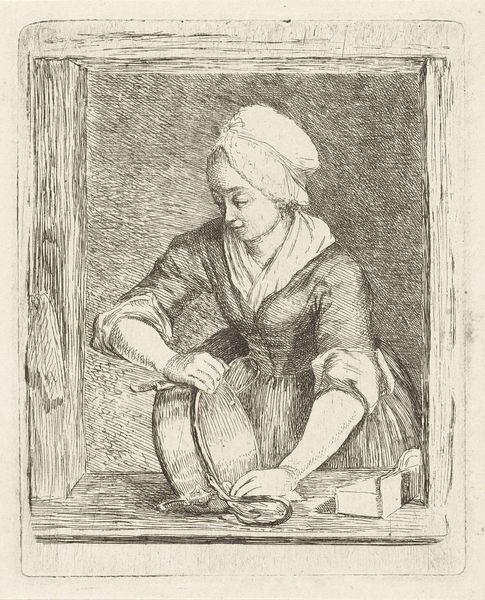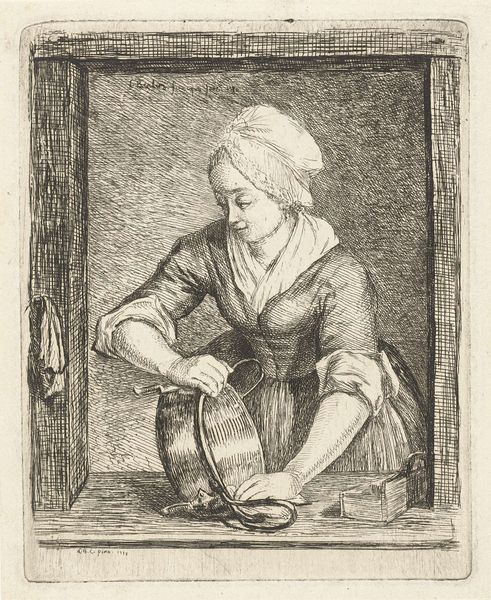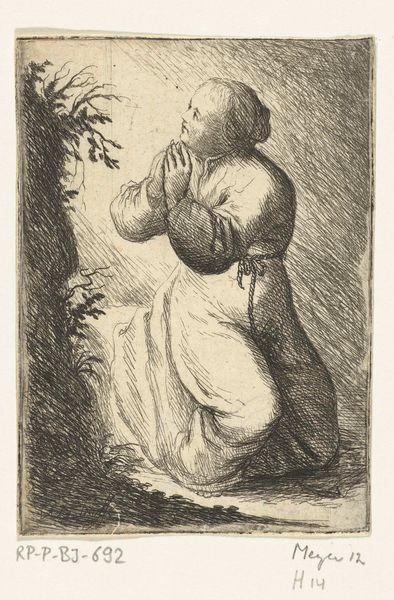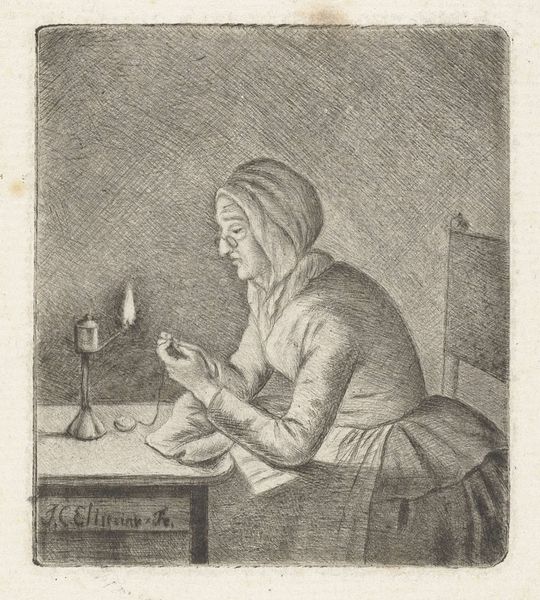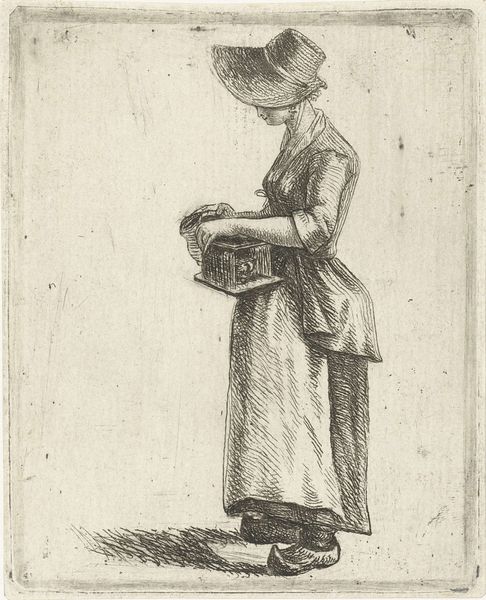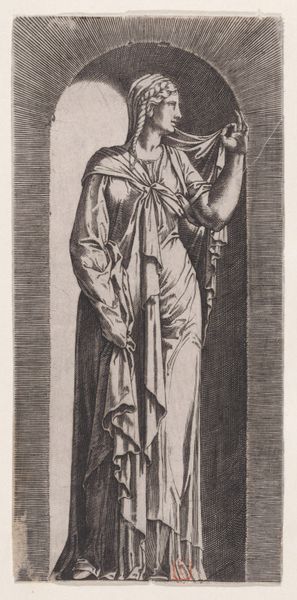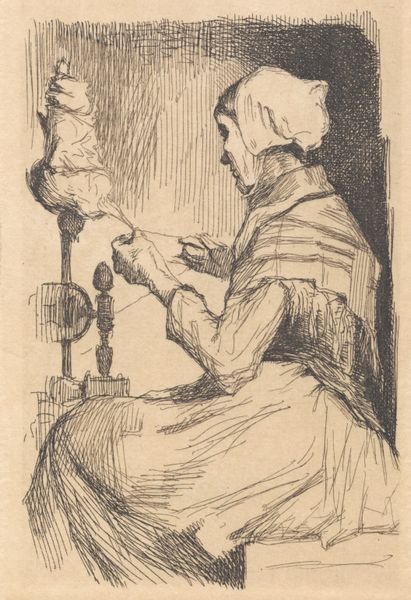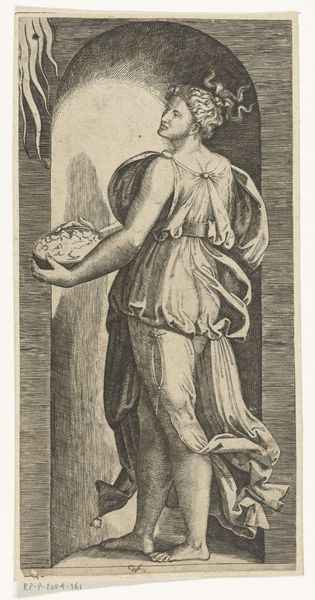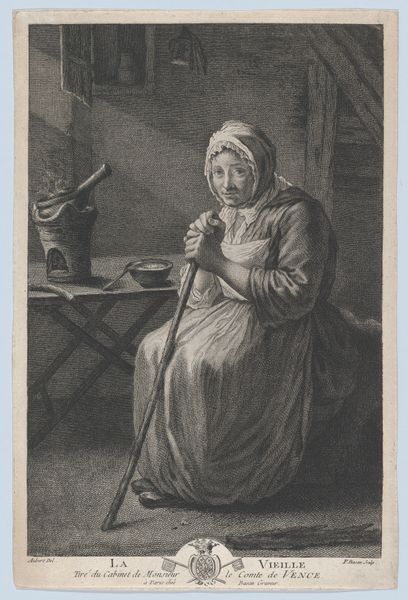
#
pencil drawn
#
light pencil work
#
pen sketch
#
pencil sketch
#
old engraving style
#
personal sketchbook
#
pen-ink sketch
#
sketchbook drawing
#
pencil work
#
sketchbook art
Dimensions: height 88 mm, width 50 mm
Copyright: Rijks Museum: Open Domain
Curator: My first thought is, wow, the hatching really makes it look like she's holding the only light source in the world. It's got this heavy chiaroscuro thing happening, you know? Editor: Indeed. Let’s take a look at “Woman with Oil Lamp” a work from 1829 by Anthonie Willem Hendrik Nolthenius de Man. It appears to be a sketch. The details are somewhat scarce about its production and display history. But if we focus on the symbolic power, we start to understand its timeless relevance. Curator: Right? The light, that small flame she protects, it feels almost…sacred. Holding knowledge? Perhaps illuminating hidden truths? It feels like it references similar imagery from earlier eras. Editor: Yes, you could say that. The iconography certainly nods to centuries of representing women as carriers of light and wisdom—think depictions of saints, goddesses, and even allegorical figures like "Enlightenment." It reflects and reinforces established ideas about gender and social responsibility in the 19th century. Curator: It's not just light as knowledge. It’s about domestic virtue. She is guarding her space. Interesting though, that a single woman and a small oil lamp serve that grand purpose of securing an environment. But still... There’s something deeply melancholic here, almost foreboding. The figure itself doesn't give any emotions; it is her burden that gives her emotion. The responsibility she feels for that light. Editor: I find it important to ask why. What context made it compelling for the artist? Was it a commentary on the domestic role of women? Or a quiet assertion of their capacity for interiority and agency in an increasingly patriarchal society? What does this imply for other historical artworks? Curator: It's intriguing to imagine de Man’s motivation. Maybe, given the cultural landscape of the time, this quiet scene was a radical assertion. The idea of interiority is what drives it, for me, what transcends its context. Editor: I agree. There’s something so enduring in its understated message. Thank you. That was wonderfully insightful. Curator: My pleasure. Until the next light.
Comments
No comments
Be the first to comment and join the conversation on the ultimate creative platform.
